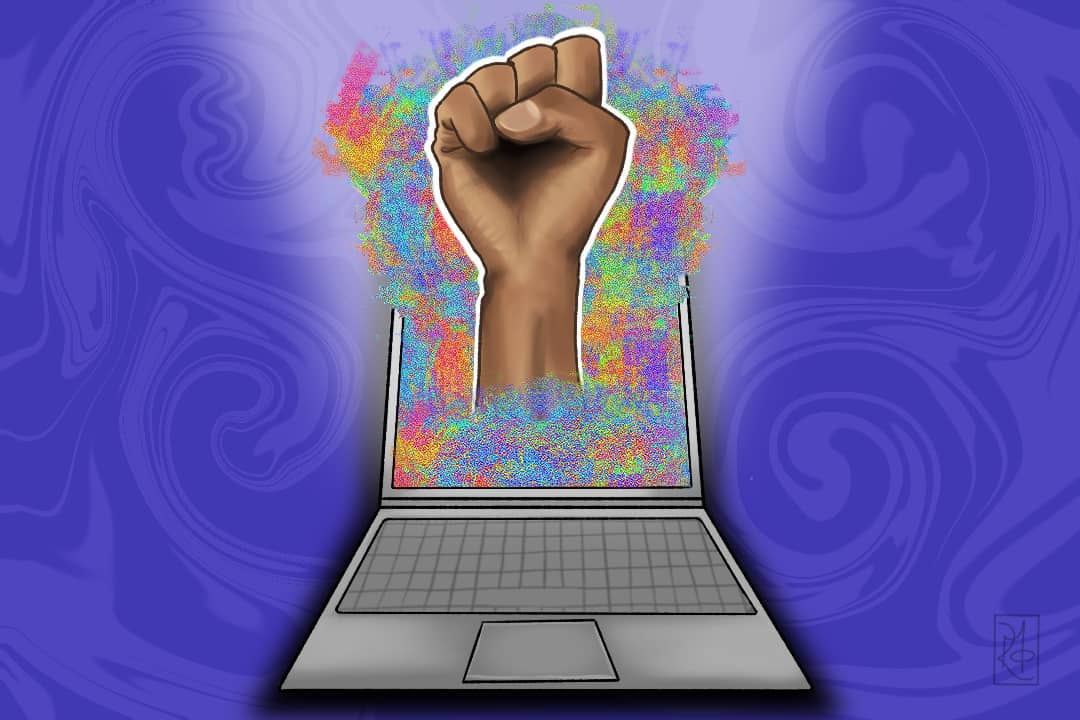Blog Post 10- Digital Activism
On this week's Blog for Tech Life, we are going to discuss the overall idea of Digital activism, what it is, how it is prevalent to us, advantages and disadvantages of it, and some examples of it today. Digital activism as I understand it is online activism, using social media and the internet to organize social and or political movements. The main idea of it is to raise awareness of issues, mobilize people, and create social change. Check out this video on why social media is so powerful for activism!
Digital activism also takes many forms such as online petitions, social media campaigns, and digital protests which can lead to in person protests. Although digital activism is more prevalent today, it was actually created in the 1990’s with the rise of computers and networks. (https://firstmonday.org/ojs/index.php/fm/article/download/10597/10194#:~:text=Early%20hacker%20activities%20have%20also,later%20(1994)%2C%20) Check out this video about online social change!
They were not however used to spread mass amounts of information online, but used for a small group of people to communicate and create in person protests. In the 2000’s digital activism changed to be more social media based using Facebook or X (then known as Twitter), reaching wider audiences around the world. With new technology today, we have advances to both completely online and or in person protests and signs of activism. Social media especially has helped like-minded individuals to connect and further mobilize these protests. Check out this article about the role of activism and advocacy online.

Individuals are now more than ever raising awareness, amplifying their voices, mobilizing their supporters, and creating leadership. Therefore there are so many advantages to new form digital activism. In a world carried by the internet, we have resources to put like minded people from all around the world and use these voices for one huge topic of conversation.

A few main advantages that I have found with digital media activism is 1. Lowering barriers of in person communication 2. More flexibility to contribute to protests and causes at hand 3. Increased safety, instead of being in the streets people can participate at home with no danger attached. An example of good online activism was the Black Lives Matter movement in 2021. This movement went from an online one to in person, with thousands of people marching against police brutality and posting pictures of black screens that flooded your social media feed. This is a great example of online activism working and leading people to take actions in person. Check out this New Yorker blog to understand the rise of Black Lives Matter Protest.
https://www.newyorker.com/culture/cultural-comment/the-second-act-of-social-media-activism

With these advantages of online activism also come disadvantages such as the idea of people participating in slacktivism instead of activism. Slacktivism is the idea that people use online activism because they are lazy and only want to support a cause through superficial actions. Another disadvantage is that many endure when participating in digital activism is the loss of connection. Such a huge part of activism and protests is feeling the power of individual voices within a collective, whereas online you have less of a connection and sometimes a less powerful movement. Check out this article about the problems with social media activism.
An online activism approach that did not work out well was the Kony 2012 campaign. In 2012, a nonprofit organization called Invisible Children released a video called "Kony 2012" that went viral on social media. The video called for the arrest of Joseph Kony, the leader of the Lord's Resistance Army (LRA), a Ugandan rebel group accused of committing war crimes and crimes against humanity. Today Kony still is successful and not in jain, therefore as much as they tried they could not make a difference through just online activism. Look into the article below to understand the political turbulence of using social media for political participation
https://academic.oup.com/book/35088/chapter-abstract/299131527?redirectedFrom=fulltext&login=false
Overall, I wanted to speak to digital activism as I think that it could be a force to be reckoned with when planning and gathering individuals for in person protests. However, I do think that many people are slacktivists and that online activism when not leading to in person protest is not as effective. I wanted to share this underlying information with you guys as we learn more about the internet as I think this is an idea that could be used to change the world. Thank for tuning in this week I hope you get a chance to look through the extra sources throughout the blog. Look into the one source I have listed below to understand clicktivism !
Extra sources to look into:
The subtle ways that clicktivism shapes the world
\https://www.bbc.com/future/article/20200915-the-subtle-ways-that-clicktivism-shapes-the-world

Comments
Post a Comment